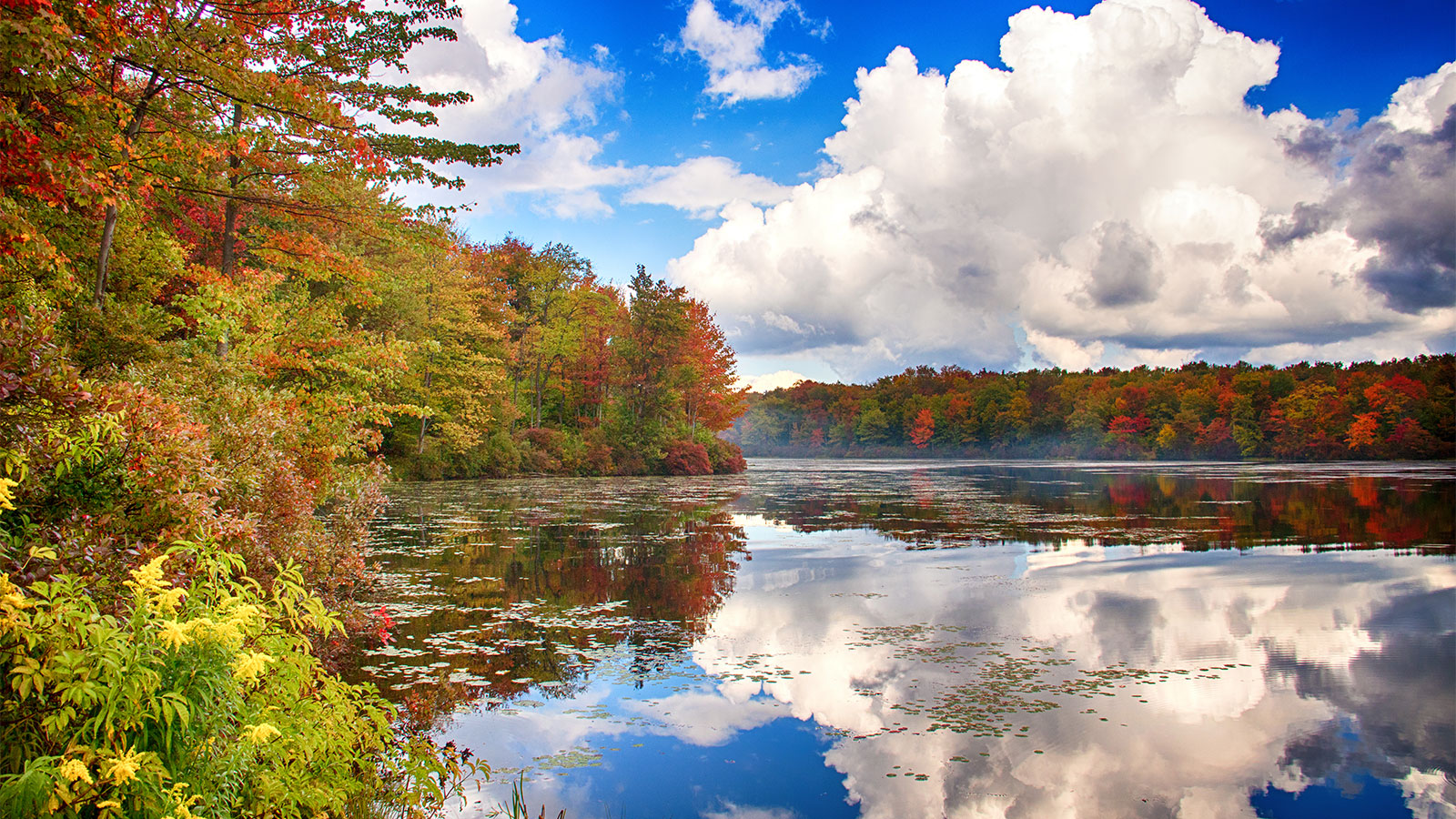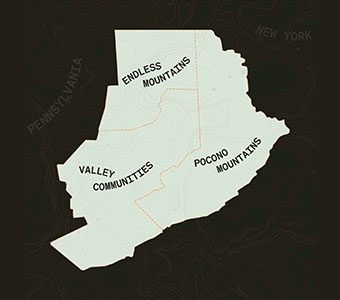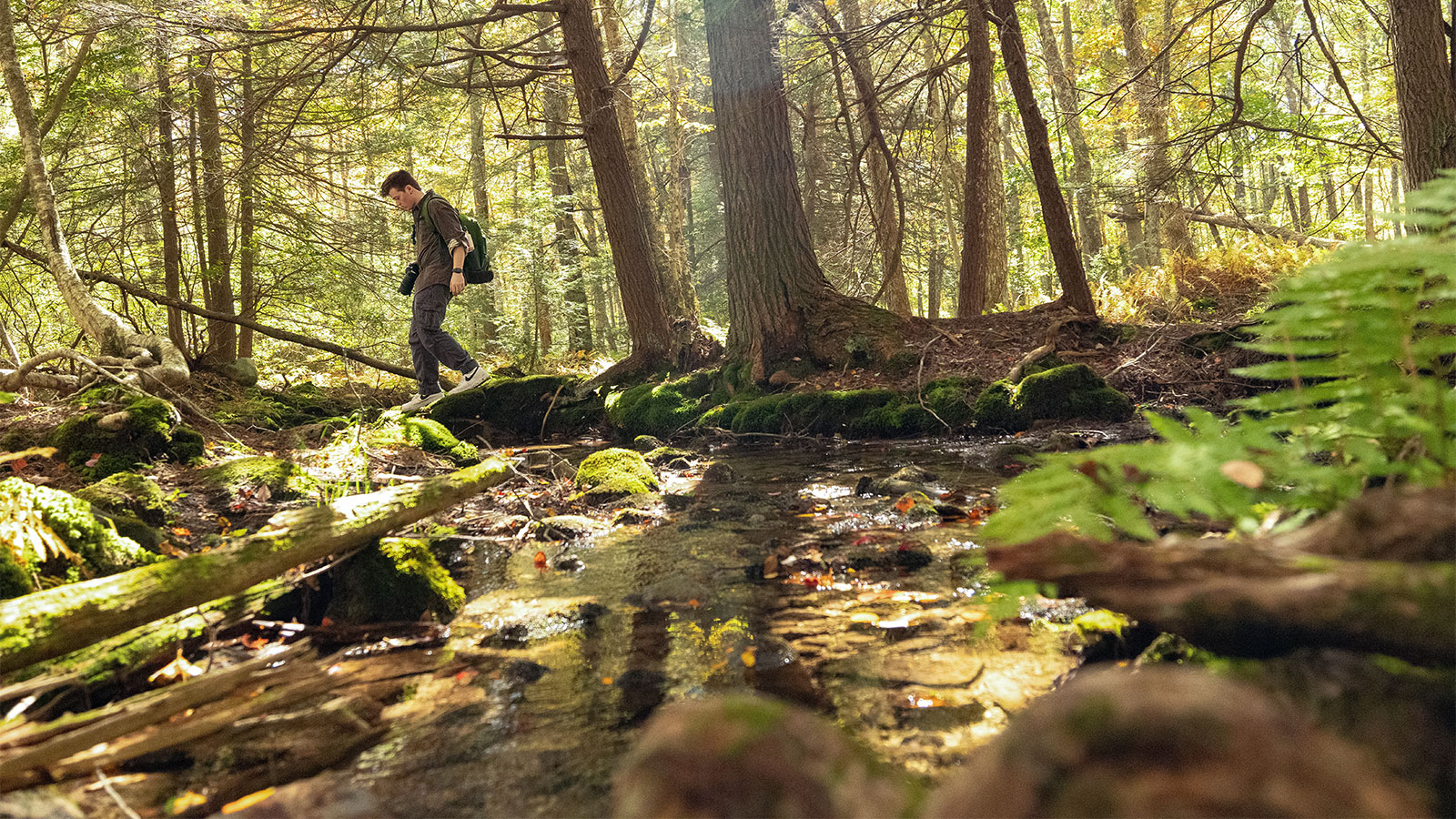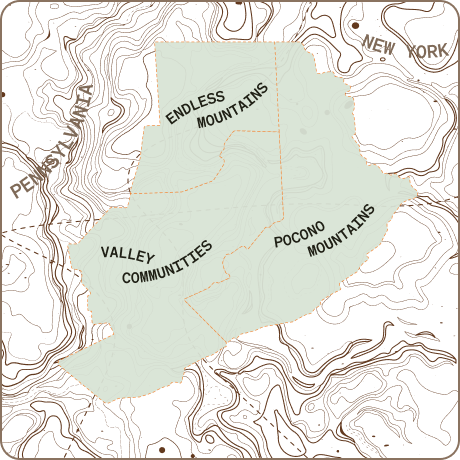The North Branch Land Trust works in partnership with landowners and local communities to conserve the natural, working and scenic landscapes in Northeastern Pennsylvania that sustain us. Explore how the conservation of even our smallest of water resources has a huge impact on conserving Northeastern Pennsylvania’s natural beauty and resources.
Help Keep Our Local Watersheds Healthy

North Branch Land Trust is named for the North Branch of the Susquehanna River. Of course, we are also a partner in conservation in the Upper Lehigh River Watershed, including beautiful Bear Creek, which flows into the mighty Delaware River. These rivers are probably the first things to come to mind when you think of “our local waters.” But NEPA contains a massive diversity of freshwater resources—and many of us know and love them best through outdoor recreation! Water-based recreation activities are available all throughout NEPA, including fishing, boating, kayaking, canoeing, swimming and even scuba diving (PA DCNR).

Fishing and boating are popular along the Susquehanna River and its tributaries, providing trout, catfish, bluegill and more. This current season has shown mixed success in our region, with high, swift waters from frequent rains limiting fish activity in some areas of the Susquehanna, while warming weather has caused a boom in some lakes and tributaries (PA Fish and Boat Commission).

These waters also provide excellent chances for scenic kayaking and canoeing with a boat registration or launching permit. In fact, the Susquehanna River is a water route from the New York border near Sayre to the Pennsylvania-Maryland border in Chester County with more than 400 miles to explore. North Branch Land Trust’s Howland Preserve is just one of more than 50 public launch sites in NEPA (Pennsylvania Water Trail).
If the Susquehanna isn’t quite your speed, there are also calm, publicly accessible lakes at places like Frances Slocum State Park. Meanwhile, whitewater rapids like those in Lehigh Gorge State Park can satisfy your taste for adventure. When you’re ready to take a dip, check out designated swimming areas like Ricketts Glen’s 600-foot sand beach and Hickory Run’s Sand Spring Lake. You can even go scuba diving in Lackawanna Lake at Lackawanna State Park.
All parks and waters have their own regulations for the safety of visitors and the habitat. Be sure to check out dcnr.pa.gov, fishandboat.com or individual park websites when planning your adventure.

But passion for our local waters shouldn’t be limited by how much fun we can have. Many NEPA waters and wetlands are not only sensitive resources, but also offer so much for our own health and safety. While large rivers and lakes are great for recreation, they and their smaller tributaries also supply drinking water to local communities, provide habitat for aquatic species and moderate stormwater impacts while protecting us from extreme weather.
Some of our local reservoirs are manmade, like the Francis E. Walter Dam. Others are forces of nature like the ancient, glacier-formed Harveys Lake. But they each serve an important purpose. These waterways large and small host amazing riparian habitats. These natural areas along tributaries, lakes and reservoirs are not only teeming with flora and fauna (which can make for a beautiful hike), but they also help to prevent flooding and soil erosion. Furthermore, many of these plants act as natural filters, helping to prevent runoff and pollution from entering our waters in the first place.

The rest of our local waters exist on the boundary of aquatic and terrestrial. Wetlands, including marshes and swamps, are the misunderstood champions of NEPA’s watershed. The combination of vegetation and hydrology means that these areas can hold onto water, even during times of drought. NBLT’s Valmont Bog Sanctuary in Hazle Township contains Magellan’s peat moss, which acts like a sponge to amass and release water as needed.

And on the smallest end of the wetland spectrum, vernal pools hold a special place in NBLT’s heart. These miniature wetlands are ephemeral, meaning they only exist for a few weeks in the spring. Here in NEPA, these pools might be the only daycare for miles around for amphibians and invertebrates. Because these pools are temporary, tadpoles and bugs do not have to fear predatory fish, and fun flora like highbush blueberry, waterworts and spikerushes can thrive (Pennsylvania Natural Heritage Program).
Even though there is so much diversity in NEPA’s waters, it’s all connected—literally! Those same waterways that can carry a kayaker from New York to Maryland are being fed by all the creeks that connect our lakes, streams and reservoirs, as well as all the snow, rain and sleet that fall on Pennsylvania. A raindrop that falls on Elk Mountain in Herrick Township, the highest point in NEPA at 2,693 feet, will travel more than 255 miles to the ocean, passing through Tunkhannock, Pittston, Bloomsburg, Danville, Harrisburg and parts of Maryland before reaching the Chesapeake Bay and then the ocean (River Runner). More dangerously, this means that fertilizers and chemical waste on or in the ground can be picked up by water traveling downstream through tributaries, potentially contaminating our waters and oceans.

By being mindful of the impact that our actions have on local waters and preserving wetlands and riparian habitats, we can reduce the amount of pollution in our local streams, the Susquehanna River, the Chesapeake Bay and eventually the Atlantic Ocean! The Susquehanna and Upper Lehigh Watersheds are perhaps the most important natural resources in NEPA for drinking water, clean air, healthy aquatic habitats, beautiful vistas and mindful recreation. Remembering how it’s all connected can help us protect it.
So, what can you do to help keep our watersheds healthy? Individuals can take these steps:
- Keep litter off the land, as it will eventually find its way into the water.
- Assure the proper disposal of household hazardous waste like detergents, oils and paint.
- Be mindful to “Leave No Trace” in and near the water so we can all continue to enjoy NEPA’s beautiful waters for generations to come.
Next time, North Branch Land Trust will be looking at the diversity of flora and fauna that populates a healthy watershed in NEPA, what they do to preserve water resources and what we can do to help them!
While recycling of unwanted household waste will vary by location, the Pennsylvania Department of Environmental Protection provides up-to-date information on collection events and drop-off programs by county.
Learn More >
Unsure of how to Leave No Trace? Get the facts and get involved!
Learn More >
Ready to save the bay and save the day? The Chesapeake Bay Foundation works to conserve and restore the Chesapeake and its tributaries.
Learn More >
Want to support conservation right here in NEPA? Please help North Branch Land Trust continue to serve our natural, scenic and working lands.
Learn More >







